Advertisements
Advertisements
प्रश्न
Is there any restriction on the upper limit of the high voltage set up in Van de Graff generator machine? Explain.
उत्तर
The main limiting factor on the value of high potential is the radii of sphere.
If the electric field just outside the sphere is sufficient for dielectric breakdown of air, no more charge can be transferred to it.
For a conducting sphere,
Electric field just outside sphere
`E = Q/(4pi in_0R^2)`
and electric potential
`V = Q/(4piin_0R)`
Thus, E = VR
Now, for E = 3 × 106 V/m (dielectric breakdown)
Radius of should be 1 m.
Thus, the maximum potential of a sphere of radius 1 m would be 3 × 106V.
APPEARS IN
संबंधित प्रश्न
A test charge ‘q’ is moved without acceleration from A to C along the path from A to B and then from B to C in electric field E as shown in the figure. (i) Calculate the potential difference between A and C. (ii) At which point (of the two) is the electric potential more and why?
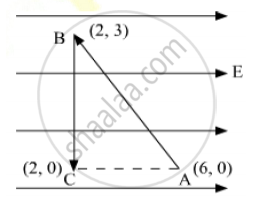
Find the potential difference `V_a - V_b` between the points a and b shown in each part of the figure.
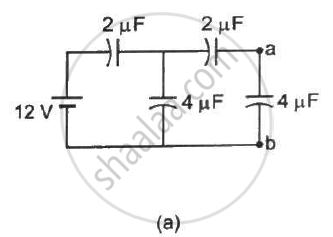
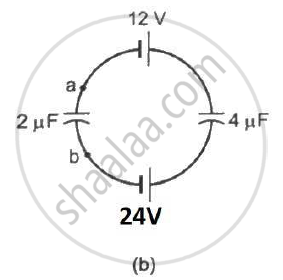
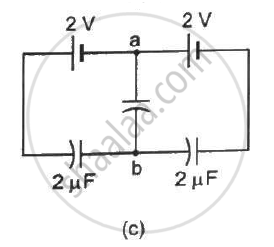
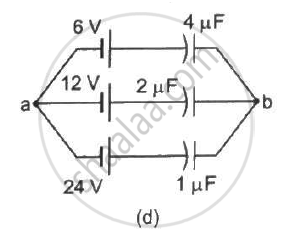
The capacitance between the adjacent plates shown in figure is 50 nF. A charge of 1⋅0 µC is placed on the middle plate. (a) What will be the charge on the outer surface of the upper plate? (b) Find the potential difference developed between the upper and the middle plates.
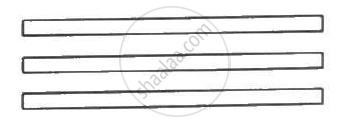
The capacitance between the adjacent plates shown in the figure is 50 nF. A charge of 1.0µC is placed on the middle plate. If 1.0 µC is placed on the upper plate instead of the middle, what will be the potential difference between (a) the upper and the middle plates and (b) the middle and the lower plates?
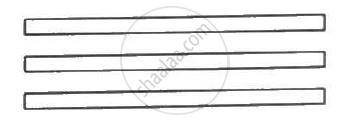
What will be the potential difference in the circuit when direct current is passed through the circuit?
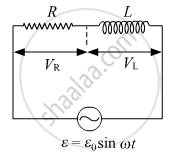
- It depends only on the initial and final position.
- It is the work done per unit positive charge in moving from one point to other.
- It is more for a positive charge of two units as compared to a positive charge of one unit.
An α-particle and a proton are accelerate at same potential difference from rest. What will be the ratio of their final velocity?
Work done in moving a unit positive charge through a distance of x meter on an equipotential surface is:-
Can there be a potential difference between two adjacent conductors carrying the same charge?
If potential difference between the two ends of a metallic wire is doubled, drift speed of free electrons in the wire ______.
